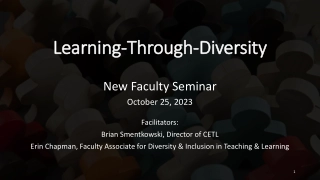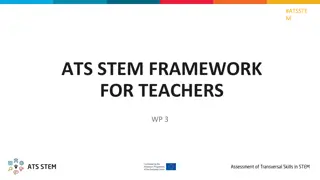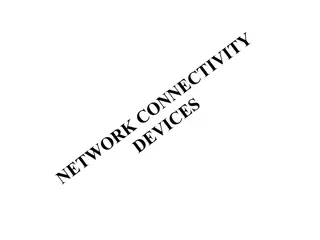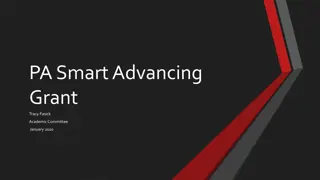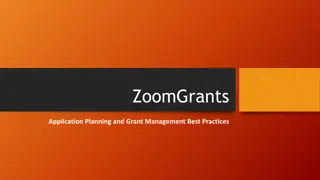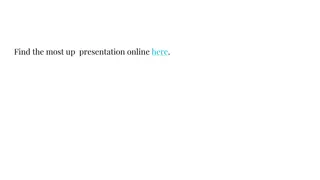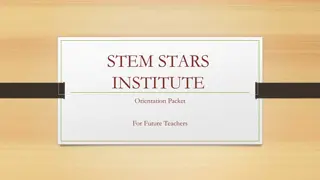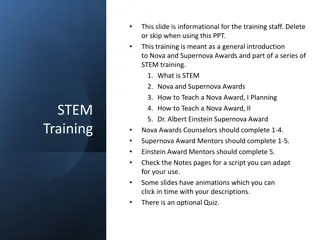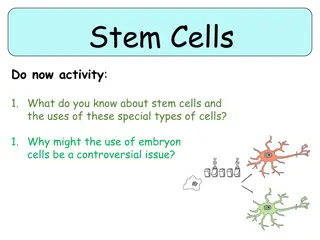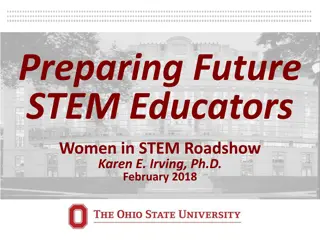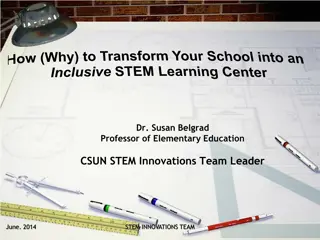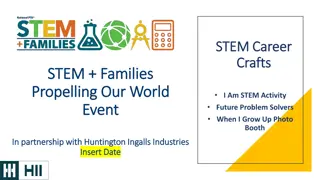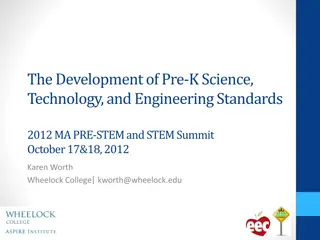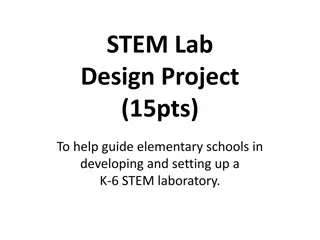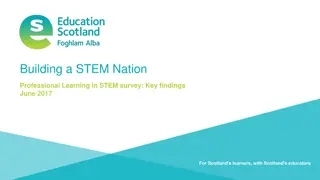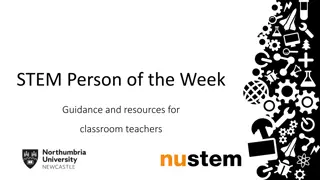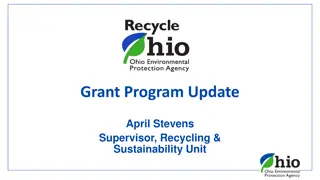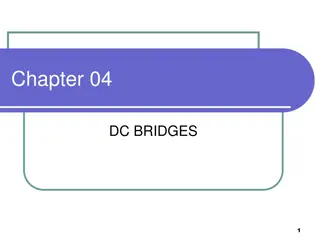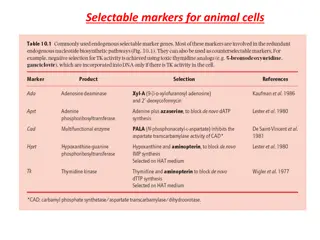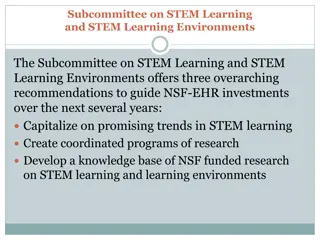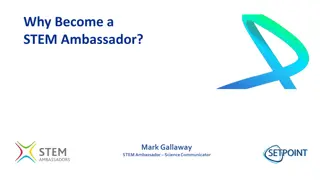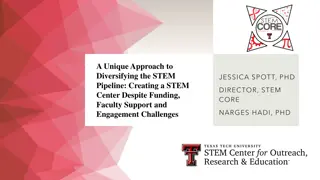Building Bridges Grant Program for STEM Education
TCU Building Bridges Grant Program offers funding opportunities for Tribal Colleges & Universities faculty-led teams to enhance STEM education, research, and curriculum. The program aims to increase student engagement in STEM activities, enrollment in STEM degree programs, and strengthen STEM capacity. Aligning with NASA's strategic goals, projects should contribute to exploration, diversity, and workforce development. Interested parties can participate in webinars and workshops for proposal development and submit applications for future cycles. Eligible teams can apply for multiple awards up to $68,600. Proposal deadline is 11:59 PM ET on August 12, 2024.
Download Presentation

Please find below an Image/Link to download the presentation.
The content on the website is provided AS IS for your information and personal use only. It may not be sold, licensed, or shared on other websites without obtaining consent from the author.If you encounter any issues during the download, it is possible that the publisher has removed the file from their server.
You are allowed to download the files provided on this website for personal or commercial use, subject to the condition that they are used lawfully. All files are the property of their respective owners.
The content on the website is provided AS IS for your information and personal use only. It may not be sold, licensed, or shared on other websites without obtaining consent from the author.
E N D
Presentation Transcript
REQUEST FOR PROPOSALS IS OPEN TCU BUILDING BRIDGES GRANT PROGRAM A Science, Technology, Engineering & Math (STEM) grant-funding opportunity developed in partnership with the American Indian Higher Education Consortium (AIHEC) and the National Aeronautics and Space Administration (NASA) \ Workshop: Building a Competitive Proposal
Todays Agenda o Welcome o Building a Competitive Proposal o Discussion and Questions o Closing & Next Steps
Timeline & Overview Each cycle, 4 webinars will be offered to support the proposal development process. 1 Information Session + Q & A (60 Min) 2 Workshop: Community of Practice (June 21) 3 Workshop: Building A Competitive Proposal (June 28) 4 Workshop: Budget Development (July 15) \ 5 Office Hours: Monday, August 6th *Webinars will also be recorded and uploaded to AIHEC.org for review TCU faculty and staff who are interested but are not ready to submit a project are encouraged to attend workshops and learn more about the program, then submit an application for a future cycle.
RFP Overview - FAQ RFP RELEASE DATE: June 17, 2024 PROPOSAL DUE DATE: 11:59 PM Eastern Time (ET) August 12, 2024 FUNDING AMOUNT: Multiple awards of up to $68,600 are available ($686,000 total each year) ELIGIBILITY: Funds are available to faculty led teams from all accredited Tribal Colleges & Universities ESTIMATED CONTRACT PERIOD: September 16, 2024 through September 16, 2026, or up to 2 years (24 months) from date of award, depending on the scope of the project. Projects designed for shorter periods of time will receive equal consideration. If projects last 1 year or less, projects can be renewed for a second cycle with an additional award.
Timeline & Overview \
Proposal Goals Proposal Goals Project must meet at least two of the three programmatic goals 1. Increase the number of Tribal College students engaging in STEM research and education activities. (Examples: internships, externships, Experiential Learning Opportunities (ELOs), Research Experiences for Undergraduates (REUs)) 2. Increase the enrollment of Tribal College students in STEM degree programs and pursuing STEM career pathways. 3. Strengthen the capacity of the Tribal College to deliver STEM courses, degrees and curriculum. AND \ Demonstrate alignment to at least one of the three strategic goals 1. Strategic Goal 1.0: Create unique opportunities for a diverse set of students to contribute to NASA s work in exploration and discovery. 2. Strategic Goal 2.0: Build a diverse future STEM workforce by engaging students in authentic learning experiences with NASA s people, content and facilities. 3. Strategic Goal 3.0: Attract diverse groups of students to STEM through learning opportunities that spark interest and provide connections to NASA s mission and work.
Proposal Goals & Priority Areas of Support Priority Areas of Support Research experiences for undergraduates (REUs) STEM program instrumentation/equipment acquisitions Course and curriculum enhancements (new courses, delivery support technologies) Professional development for TCU faculty, undergraduate, and graduate students, including conferences and workshops In person, hybrid or virtual NASA Internships for TCU students which must be funded at the same level of set NASA Intern cost amounts, as shown in the tables \
Read the RFP! Follow it exactly! Read the RFP Requirements and Guidelines then read them again and follow them exactly! take note of page and word limits \ Think about the Quality of your Idea and its appeal to funder refer to the RFP s Priority areas of Support Respond to all Sections of the RFP
Create a Meaningful Title & Abstract Section 1 Project Title & Abstract Title is important it should convey what the project is about Abstract (done last) should be able to stand alone pull content from Sections 1-3 + additional you may be able to use same abstract in your pre-application \
Turning your Idea into a Fundable Proposal Section 2: Engaging Community and Building Capacity Learning Outcomes Discuss how this project will impact your TCU and community. For example: If students are working on the project, what knowledge or skills will they obtain? \ How many students will the project support and impact? Will they receive course credit? How will this project support their successful entry into a STEM career in the future?
Turning your Idea into a Fundable Proposal Section 2: Engaging Community and Building Capacity Alignment Describe contribution to larger TCU or department mission and goals. Clearly demonstrate how this project will address two of the three stated NASA AIHEC Bridges programmatic goals. Clearly demonstrate how this project advances existing goals for STEM within your TCU s department, division, team, and/or office. \ Demonstrate alignment to at least one of the stated NASA Office of STEM Engagement Strategic Goals. Project Staff Biographical Sketches (1) para on each staff member why they re qualified to do the work. PI - robust CV
Turning your Idea into a Fundable Proposal Example: Engaging Community & Building Capacity Michael at TCU A has a project he wants to propose. A cohort of 10 students doing research, lab work, and field testing to gain the experience needed to qualify for NASA internships. This project aligns with TCU A s strategic plan of building a STEM workforce. Outcome: Students are chosen for paid internship positions at NASA. This project results in highly skilled STEM professionals \ who take their skills and knowledge back to their communities and make a tangible impact. This checks all the boxes for Learning Outcomes content tells how aligns with TCU STEM goals and impacts communities, aligns to Programmatic Goals 1 & 2 and Strategic Goals 2 & 3 and advances.
Turning your Idea into a Fundable Proposal Section 3: Creating the Story Landscape Discussion/Statement of Purpose Discuss the current state of the field in relationship to your area of interest, including what needs may exist in the field or areas that are underexplored. \ Describe the overarching goals of the project, specifically addressing the question: What learning, community, institutional or research gaps in the STEM field does this project seek to fill ?
Next Workshop Section 4: Building the Scaffolding Budget Narrative & Budget Table Next Workshop - Budget Development \ Monday, July 15th
Plan your Timeline Section 5: Planning & Implementing Implementation timeline Provide a detailed timeline for the project, including anticipated key dates for milestones, deliverables, and other important project tasks. The timeline can be written or represented visually. \
Section 5: Planning & Implementing Tell your Story Storytelling Discuss how the project will deliver any final products such as reports, media or presentations Describe how such deliverables may be shared with other TCUs, the broader research community, or general public. Note: If no tangible products are being developed, video or audio logs and diaries are acceptable. \ Include clear metrics of success for the project along with a simple evaluation plan. It is important to be able to demonstrate evidence of success in reaching stated goals.
Abstract Now you have all the pieces you need to write your abstract: Tell your Story Example (single paragraph) The Reactive Rover program seeks to train pandemic puppies who were isolated and require the social skills needed to interact well with other dogs and humans. (Title, Section 3 Landscape/purpose) \ Puppies that graduate from an intensive six-week course will be well-behaved, calm and interact positively in a variety of settings. (Section 2 -Outcomes) This one-year project will be led by Kathy (PI) and John at TCU A, in partnership with trainers from Hound Around academy. (Section 1 Who and how long)
The Abstract is your Project s Elevator Speech Abstract Include in Project Abstract Name of your TCU Principal Investigator(s) staff member leading the project Co-Principal Investigator(s) project co-lead(s) \ Collaborators and Partner Institution(s) names and titles or individual collaborators or partners and/or the names of collaborating/partnering institutions and organizations (optional) Project Duration The estimated duration of your project
Turning your Idea into a Fundable Proposal Best Practices When writing - Write to the Funding Source using Professional Language never use jargon never write in 1stperson write with clarity no fancy language or complicated sentences don t use language that is biased respond to all Sections adhere to formatting restrictions page limitations topics must be covered in order presented in Guidelines use Headings that correspond to the Guidelines \
Turning your Idea into a Fundable Proposal Write to Persuade use current data from a reputable source establish credibility present your case honestly and with integrity no unsubstantiated opinions don t make statements that can t be proven \ Project and Plan communicated clearly and concisely RFP uses the descriptor detailed throughout Ask Questions!
THANK YOU FOR COMING! PLEASE COMPLETE OUR SURVEY: \ WE WILL COME BACK TOGETHER MONDAY, JULY 15TH TO REVIEW BUDGET DEVELOPMENT


